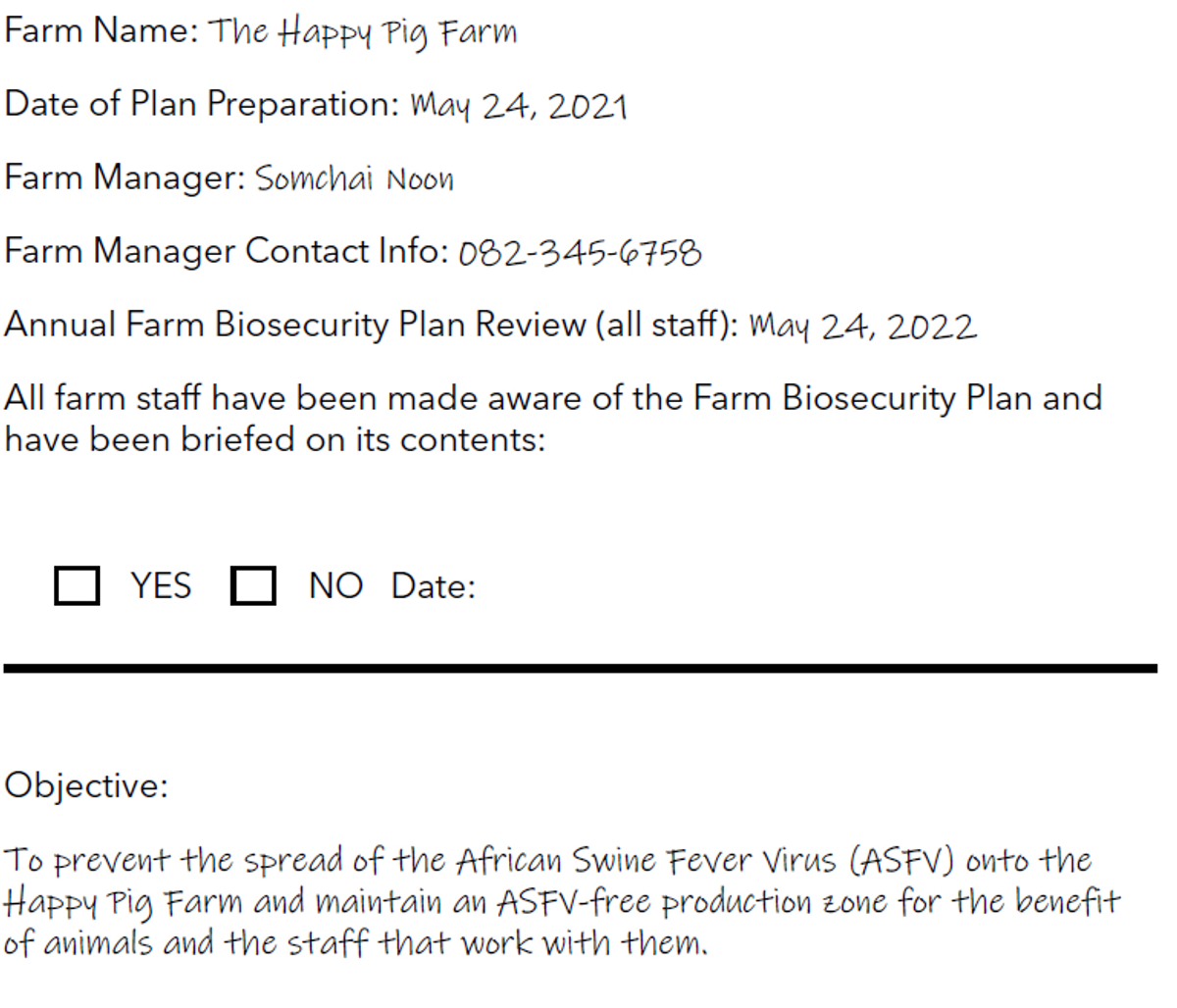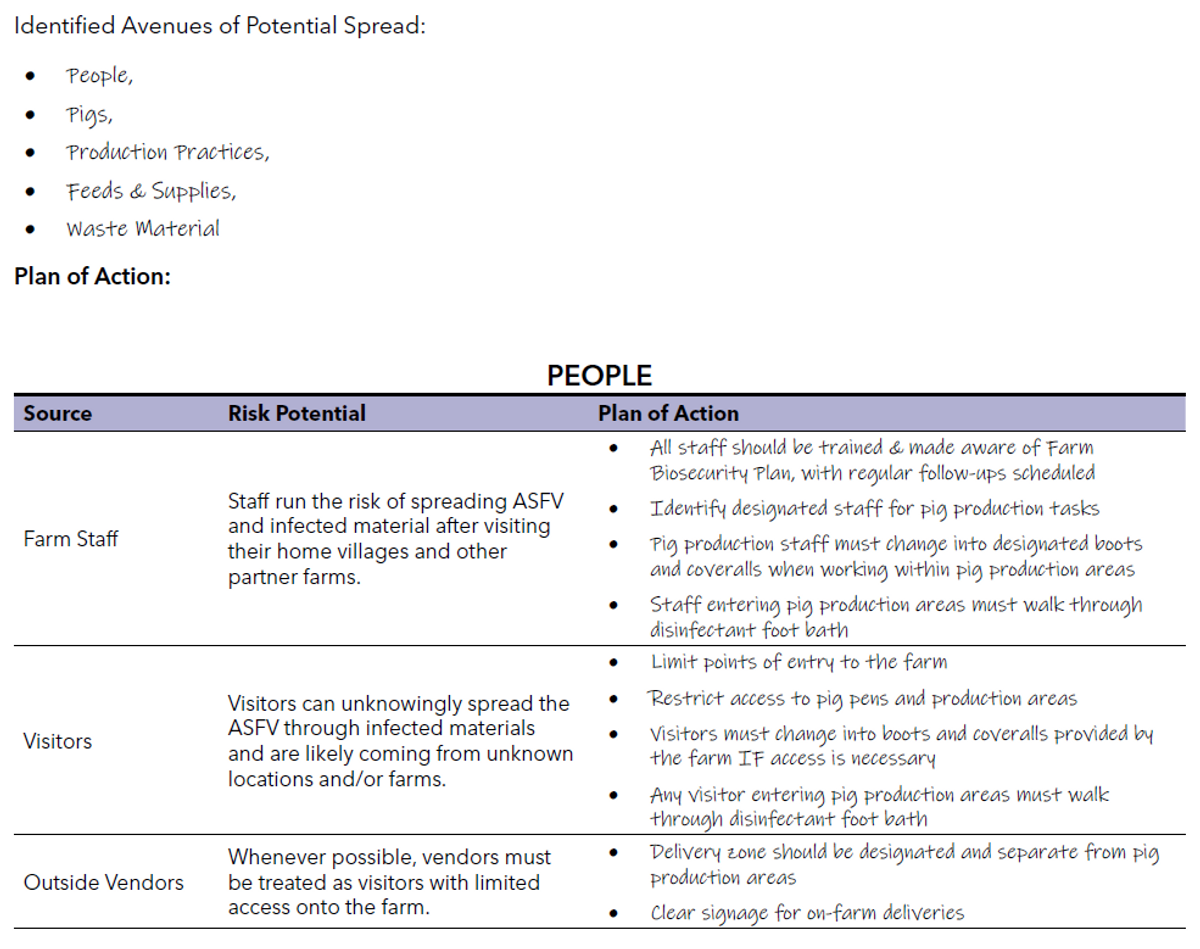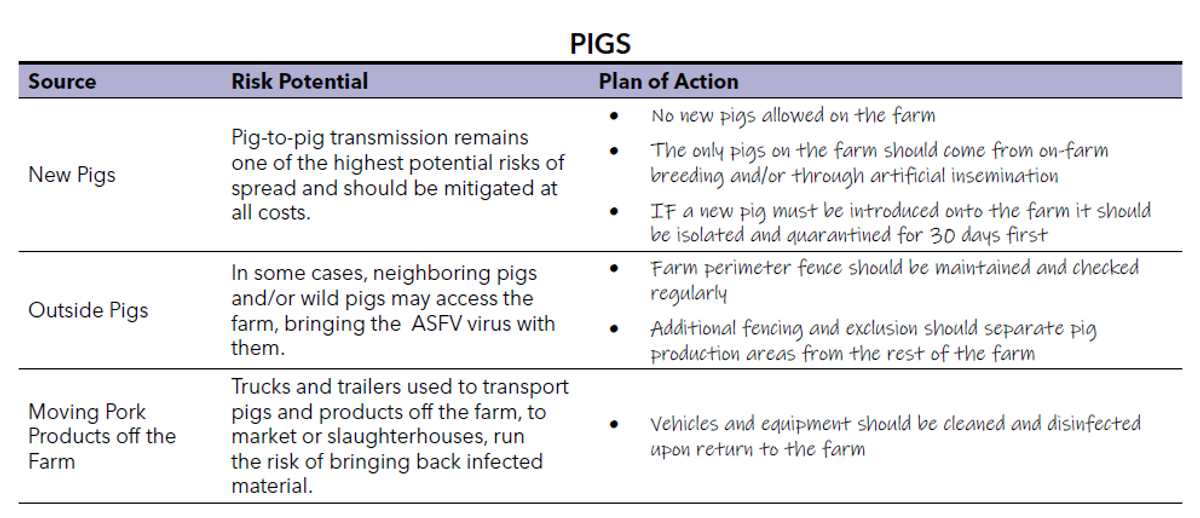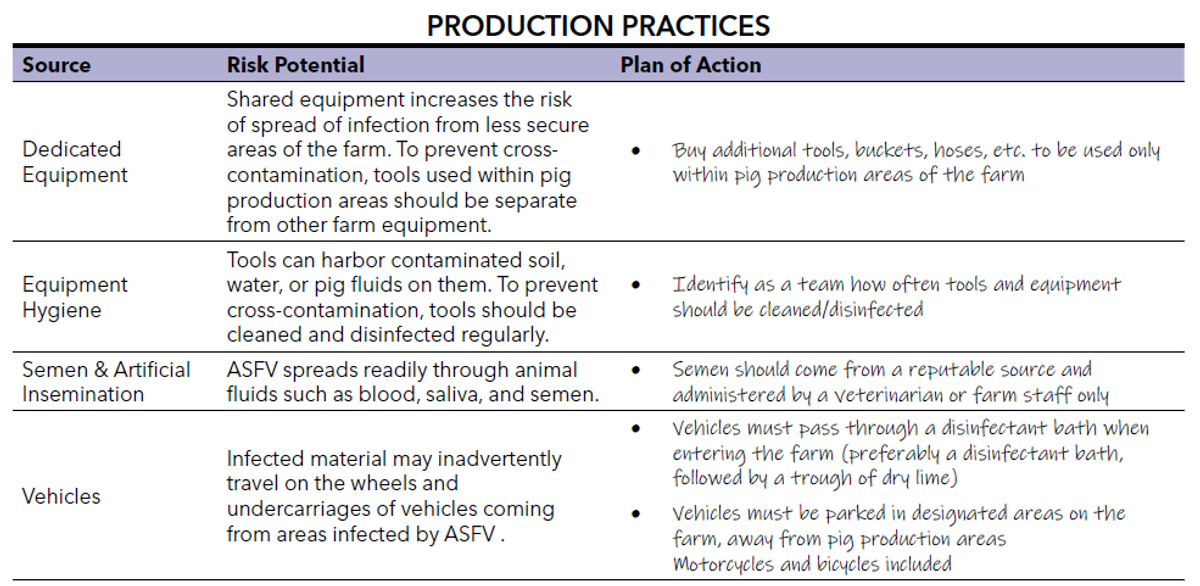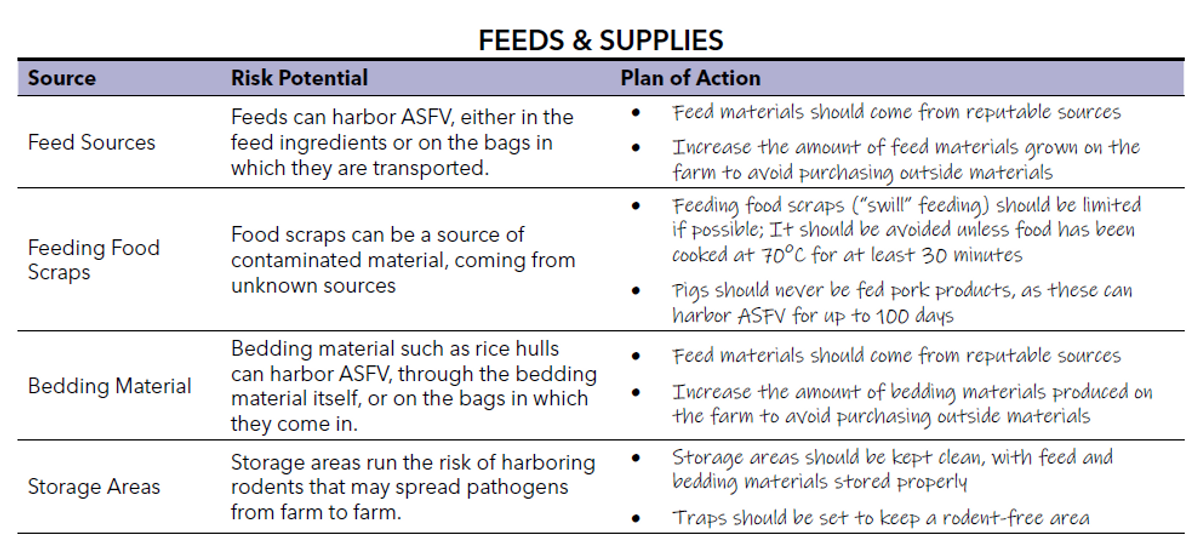[编者按:这只是一个地区小规模生猪作业的生物安全计划的一个例子,可以作为模板使用。不太可能所有措施都是切合实际或适合您的情况的,因此应该根据您农场的需要和优先顺序进行调整。建议采用的任何此类农场计划都是与您的团队在整个农场范围内进行讨论的结果,以便最大限度地获得接受、理解和实践。]
[Editor’s Note: This is only one example of a biosecurity plan for small-scale pig operations in one region and may be used as a template. It is unlikely that all measures will be practical or appropriate for your context and should therefore be adapted according to the needs and priorities of your farm. It is recommended that that the adoption of any such farm plan be the result of farm-wide discussions with your team for maximum buy-in, understanding, and practicality.]
Notes:
- Remember that sunlight and dry conditions kill the virus, while shaded and moist conditions allow it to thrive.
- All disinfectants require time to kill ASFV because it is so densely encapsulated (like an onion). The virus is inactivated by high pH and low pH (<4 and >11). Several of the disinfectants are good—they require contact time.
- Various disinfectants are effective: chlorine, iodine, formalin, and caustic soda (lye; NaOH) are all effective. See Disinfectants for Use Against ASFV resource for more information.
- Foot baths are difficult to keep clean and need to be changed daily to remain effective.
- It is recommended (because of cost) that footbaths be filled with a concentrated bleach solution (8 oz per gallon of water) and then have a dry pan of lime to step into with wet boots; both are relatively cheap and will work if kept clean and fresh.
- Vehicle and bicycle tires do not stay in the tire baths long enough to do the trick —and easily become contaminated. If possible, wash tires and then have vehicles drive through dry lime. The lime area needs to be long enough for the whole circumference of the tire to be exposed to the lime.
